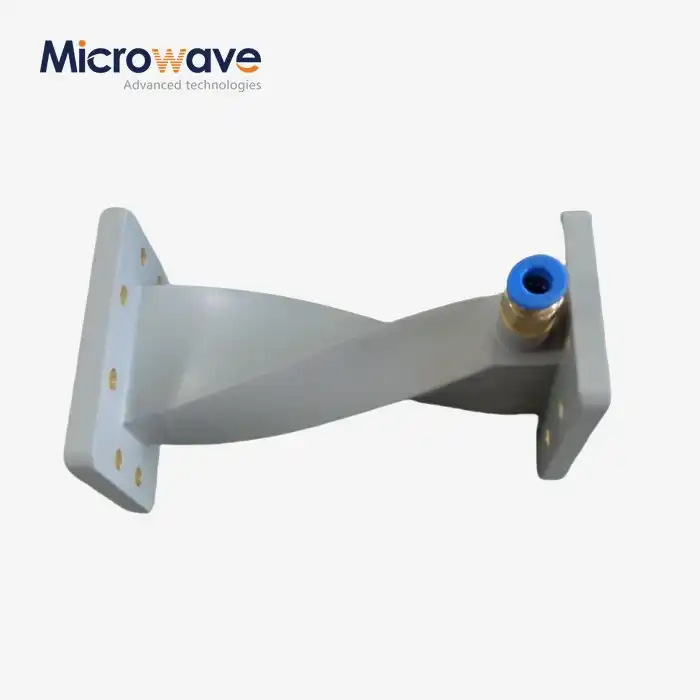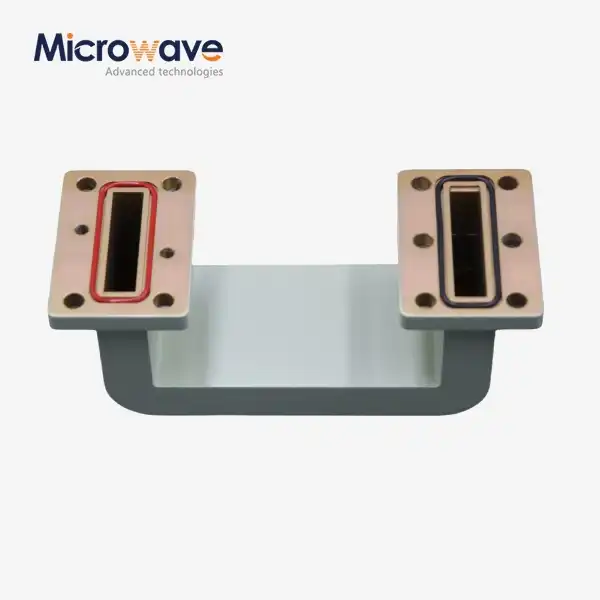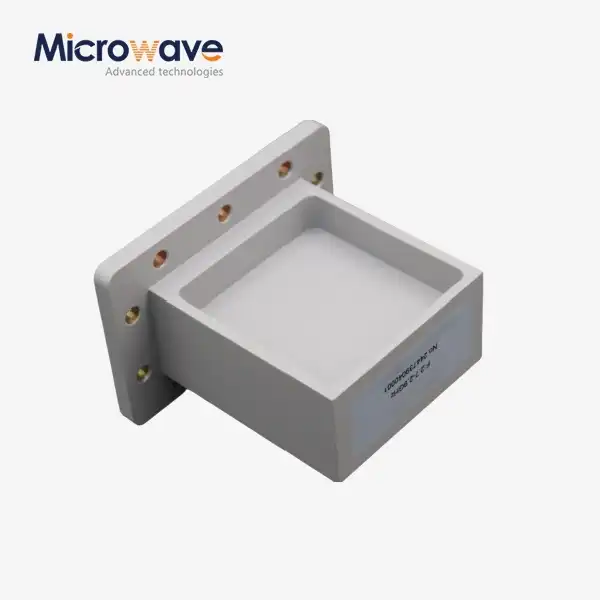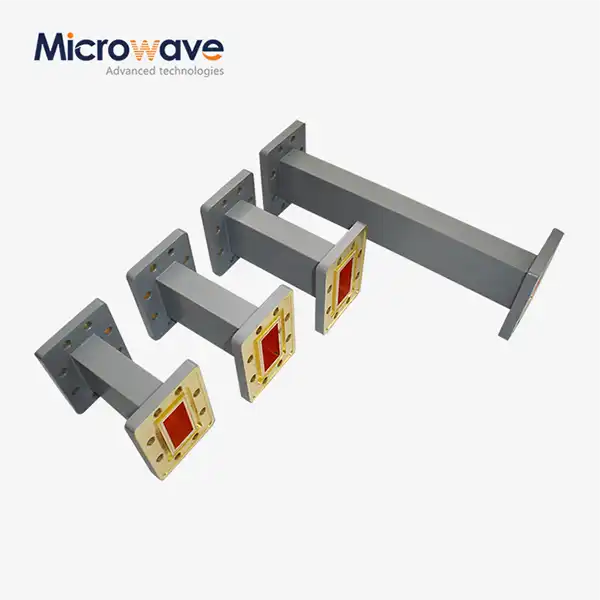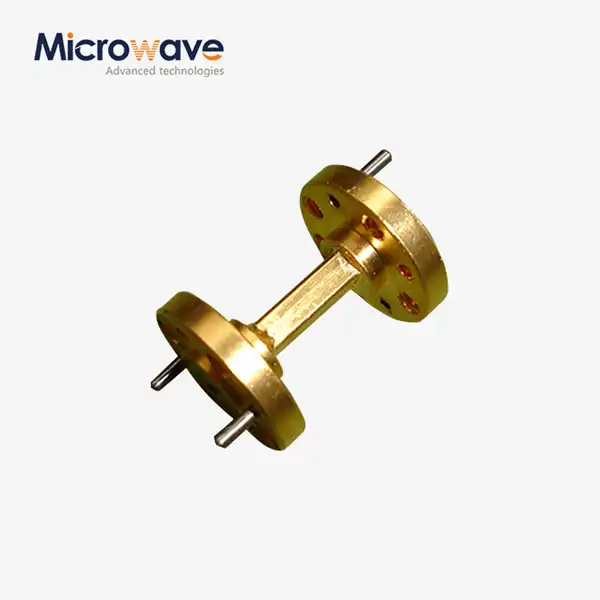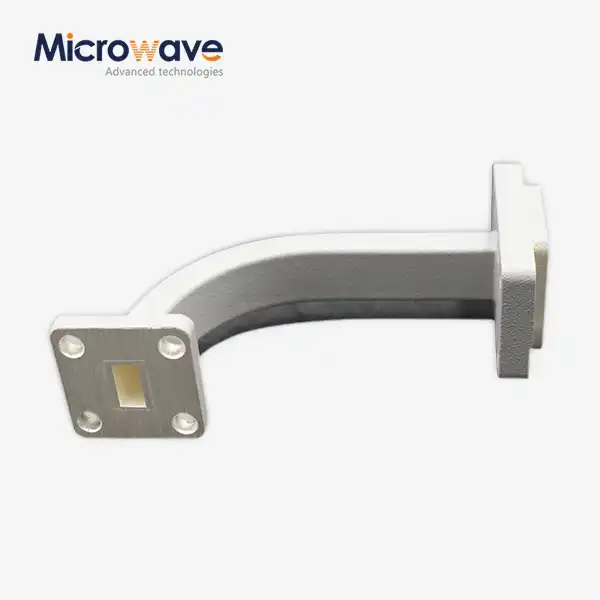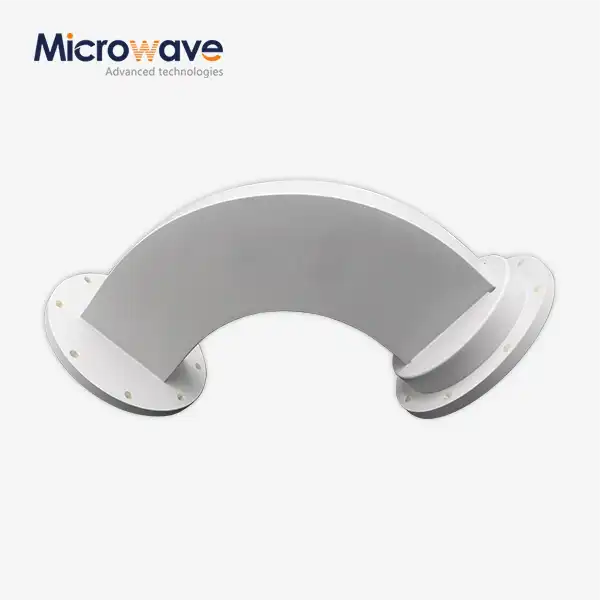What are the key design features of double-bend waveguides?
Double-bend waveguides represent a critical innovation in microwave engineering, combining precision mechanics with electromagnetic theory to solve complex signal routing challenges. These specialized waveguide components feature two strategic bends in their structure, allowing electromagnetic waves to navigate corners and obstacles without significant signal degradation. The Double-bend Waveguide design is particularly valuable in applications where space constraints require signals to change direction while maintaining transmission integrity. Advanced Microwave Technologies has perfected these components through decades of specialized manufacturing expertise, creating solutions that balance mechanical constraints with optimal electromagnetic performance.
Fundamental Engineering Principles of Double-Bend Waveguides
Electromagnetic Wave Propagation Mechanics
The fundamental operation of a Double-bend Waveguide depends on sophisticated electromagnetic principles that govern how signals navigate through non-linear paths. When electromagnetic waves encounter a bend in a waveguide, they naturally experience reflection and mode conversion phenomena that can compromise signal integrity. Advanced Microwave's Double-bend Waveguide addresses these challenges through precise geometric modeling that accounts for wave behavior at discontinuities. The interior dimensions are carefully calibrated to maintain the desired propagation mode throughout the entire structure, ensuring that the electromagnetic field patterns remain stable despite the change in direction. For example, in the ADM-HT180WEEB12.34X49.58X6.12T1 model operating in the 19.2-21.2GHz frequency range, the internal geometry is optimized specifically for that band, allowing waves to navigate the bends with minimal distortion. This precise calibration of bend radius, cross-sectional dimensions, and interior wall characteristics ensures that the Double-bend Waveguide can redirect signals with remarkable efficiency, achieving insertion losses as low as 0.1dB and VSWR values of just 1.1, which represents near-perfect transmission characteristics in professional microwave applications.
Material Selection and Surface Treatment
Material composition represents a critical design factor in Double-bend Waveguide performance. Advanced Microwave Technologies employs premium materials like oxygen-free copper and high-grade aluminum, selected specifically for their superior conductivity characteristics and mechanical stability. The conductivity of these materials directly impacts the waveguide's insertion loss, as higher conductivity translates to less energy dissipation during transmission. Beyond base material selection, surface treatments play an equally important role in optimizing performance. The interior surfaces of Advanced Microwave's Double-bend Waveguide components undergo precision polishing procedures that reduce surface roughness to microscopic levels, minimizing signal attenuation caused by surface scattering effects. Many models feature gold plating on interior surfaces, which not only enhances conductivity but also provides exceptional corrosion resistance to ensure long-term performance stability. The combination of premium base materials and sophisticated surface treatments enables Advanced Microwave's Double-bend Waveguide products to achieve remarkably low insertion losses even at higher frequency bands. This attention to material science represents a fundamental advantage for systems where every decibel of signal integrity matters, particularly in satellite communications and other high-frequency applications where signal power budgets are tightly constrained.
Geometric Optimization for Signal Integrity
The geometric design of a Double-bend Waveguide presents unique challenges that demand advanced engineering solutions. Advanced Microwave Technologies implements sophisticated computational modeling techniques to optimize the bend geometry for minimal signal reflection. The bend radius represents a critical parameter – too sharp a bend causes significant mode conversion and reflection, while too gradual a bend increases the overall size unnecessarily. Through precision engineering, Advanced Microwave has developed optimal bend profiles that maintain signal integrity while meeting spatial constraints. Additionally, the transition zones where straight sections meet curved sections require careful design consideration. These areas often incorporate subtle tapers or stepped transitions that help match impedance characteristics throughout the structure, preventing signal reflections at these potential discontinuities. The overall layout of the Double-bend Waveguide is strategically designed to maximize signal throughput while minimizing physical footprint, making these components particularly valuable in compact satellite communication systems and other space-constrained applications. The geometric precision of Advanced Microwave's Double-bend Waveguide designs is evident in their technical specifications, with components consistently achieving VSWR values of 1.1 or better across their operating bands, indicating extremely low reflection characteristics even with the challenging double-bend configuration.

Performance Characteristics and Technical Specifications
Bandwidth and Frequency Response
The bandwidth capabilities of a Double-bend Waveguide significantly impact its practical applications across various communication systems. Advanced Microwave Technologies designs their Double-bend Waveguide products with carefully optimized dimensions to support specific frequency bands with exceptional performance characteristics. The relationship between waveguide dimensions and operational frequency is governed by electromagnetic theory – the cross-sectional dimensions determine the cutoff frequency below which signals cannot propagate effectively. Advanced Microwave's double-bend configurations maintain consistent cross-sectional dimensions throughout the bends to preserve the intended bandwidth capabilities. This sophisticated dimensional control allows their Double-bend Waveguide components to operate effectively across their specified frequency ranges without introducing frequency-dependent distortion that would compromise bandwidth-intensive applications. For instance, the ADM-HT180WEEB12.34X49.58X6.12T1 model delivers consistent performance across its entire 19.2-21.2GHz operational band. The advanced manufacturing techniques employed by Advanced Microwave ensure dimensional stability throughout production, yielding Double-bend Waveguide components with exceptional frequency response flatness. This performance characteristic is particularly valuable in wideband systems where signal quality must be maintained across substantial frequency ranges, such as in sophisticated radar systems and broadband satellite communications where frequency-dependent performance variations cannot be tolerated.
Power Handling Capabilities
The power handling capability of a Double-bend Waveguide represents a critical performance parameter for high-power transmission applications. Advanced Microwave Technologies designs their Double-bend Waveguide products with robust power handling in mind, incorporating thermal management considerations at every stage of the design process. The bends in waveguide structures naturally present challenges for power handling, as electromagnetic field concentration can occur at these transitions, potentially creating hotspots that limit overall system capability. Through sophisticated electromagnetic simulation and thermal analysis, Advanced Microwave optimizes their Double-bend Waveguide designs to distribute field intensity evenly, preventing localized power concentration. The premium materials used in construction, including high-conductivity copper and aluminum alloys, contribute significantly to power handling capabilities by efficiently dissipating heat generated during high-power transmission. The precision manufacturing processes employed by Advanced Microwave ensure that internal dimensions remain consistent throughout the component, eliminating the dimensional irregularities that could otherwise create field concentrations that diminish power handling. The gold plating commonly applied to the interior surfaces of their Double-bend Waveguide products not only enhances electrical performance but also improves thermal characteristics by providing superior thermal conductivity paths. These engineering considerations enable Advanced Microwave's Double-bend Waveguide components to handle substantial power levels while maintaining their exceptional low-loss characteristics, making them suitable for demanding applications in high-power radar systems and broadcast communications.
Environmental Resilience and Durability
Environmental durability represents an essential characteristic of Double-bend Waveguide components, particularly in outdoor and aerospace applications where exposure to environmental stressors is inevitable. Advanced Microwave Technologies engineers their Double-bend Waveguide products with robust environmental resilience, incorporating design features specifically intended to maintain performance under challenging conditions. The exterior surfaces typically feature protective treatments like anodizing for aluminum components or specialized coatings that prevent corrosion even in maritime or high-humidity environments. The interior gold plating common in Advanced Microwave's Double-bend Waveguide products provides exceptional resistance to oxidation and other environmental degradation that could otherwise compromise performance over time. Mechanical stability represents another crucial aspect of environmental durability. The double-bend configuration inherently creates potential vulnerability to mechanical stress, which Advanced Microwave addresses through structural reinforcement at key points and materials selected for their mechanical stability characteristics. Temperature cycling resistance is particularly important for Double-bend Waveguide components used in aerospace applications where extreme temperature variations are common. Advanced Microwave employs materials with closely matched thermal expansion coefficients to prevent mechanical stress from temperature fluctuations. Additionally, advanced manufacturing techniques ensure tight tolerances and secure joints that maintain their integrity under thermal stress. These durability features ensure that Advanced Microwave's Double-bend Waveguide products deliver consistent performance not just at installation but throughout extended service life in demanding environmental conditions.

Application-Specific Design Considerations
Compact Systems Integration
The efficient integration of Double-bend Waveguide components into compact systems presents unique engineering challenges that require specialized design considerations. Advanced Microwave Technologies has developed their Double-bend Waveguide products with a focus on minimizing the space envelope while maximizing electromagnetic performance. The fundamental advantage of double-bend configurations lies in their ability to route signals around obstacles and through confined spaces without compromising signal integrity. Advanced Microwave optimizes this capability through precision bending techniques that maintain consistent internal dimensions throughout the bends, preserving the electromagnetic characteristics that ensure low insertion loss and minimal reflection. The flange interfaces are carefully designed for compatibility with standard interconnection systems while minimizing the overall footprint, allowing system designers to achieve higher component density. In particularly space-constrained applications, Advanced Microwave can customize the bend angles and segment lengths of their Double-bend Waveguide products to accommodate specific spatial requirements. This customization capability proves invaluable in sophisticated satellite communications systems where every cubic millimeter matters and signal integrity cannot be compromised. The compact nature of Advanced Microwave's Double-bend Waveguide designs makes them particularly valuable in modern communication systems where miniaturization continues to drive innovation. Despite their compact form factor, these components maintain exceptional performance specifications, achieving insertion losses as low as 0.1dB even with the complex double-bend geometry – a testament to Advanced Microwave's engineering expertise in balancing spatial efficiency with electromagnetic performance.
Precision Manufacturing Techniques
The exceptional performance of Double-bend Waveguide components depends critically on manufacturing precision that maintains tight tolerances throughout the complex three-dimensional structure. Advanced Microwave Technologies employs sophisticated manufacturing techniques specifically optimized for waveguide production, ensuring dimensional accuracy even through the challenging bend sections. The fabrication process typically begins with high-precision CNC machining of the base material, creating the initial waveguide channel with tightly controlled dimensions. The bending process represents a particularly critical manufacturing stage, as it must reshape the waveguide without introducing distortion or dimensional inconsistency. Advanced Microwave has developed specialized bending fixtures and processes that maintain the critical internal dimensions throughout the bend radius, preserving the waveguide's electromagnetic characteristics. After forming, components undergo meticulous quality control inspection, including dimensional verification and electrical performance testing. Interior surface finishing represents another crucial manufacturing consideration, as surface roughness directly impacts insertion loss. Advanced Microwave implements multi-stage polishing procedures that achieve mirror-like interior finishes with roughness measured in microinches, minimizing signal attenuation due to surface scattering effects. The gold plating process applied to many Double-bend Waveguide models is precisely controlled to ensure uniform thickness and adhesion, enhancing both electrical performance and environmental durability. This commitment to manufacturing excellence enables Advanced Microwave to consistently produce Double-bend Waveguide components that meet or exceed their specified performance parameters, with VSWR values as low as 1.1 and insertion losses of just 0.1dB – specifications that demand extraordinary manufacturing precision to achieve reliably.
System-Level Performance Optimization
Integrating Double-bend Waveguide components into larger microwave systems requires careful consideration of system-level performance optimization to achieve maximum overall efficiency. Advanced Microwave Technologies approaches Double-bend Waveguide design with a holistic perspective that considers not just the component's isolated performance but its contribution to the entire signal chain. Impedance matching represents a critical aspect of this system-level optimization, as any impedance discontinuities between the Double-bend Waveguide and adjacent components can create signal reflections that degrade overall system performance. Advanced Microwave designs their Double-bend Waveguide products with precisely controlled impedance characteristics and standard flange interfaces that ensure seamless integration with other system components. Signal phase management presents another important system consideration, particularly in phased array and other phase-sensitive applications. The bend geometry in a Double-bend Waveguide inherently affects the phase length of the transmission path, which Advanced Microwave carefully calculates and documents to support system designers in maintaining proper phase relationships. In systems where multiple Double-bend Waveguide components are employed, Advanced Microwave can provide phase-matched sets that maintain consistent electrical length across components, enabling precise phase control in sophisticated systems. The compact nature of Advanced Microwave's Double-bend Waveguide designs supports system-level efficiency by minimizing the overall transmission path length, reducing system insertion loss while enabling more flexible component placement. This comprehensive approach to system-level performance optimization makes Advanced Microwave's Double-bend Waveguide components particularly valuable in complex microwave systems where every component must contribute to maximizing overall system efficiency.
Conclusion
Double-bend waveguides represent a critical technology for modern microwave systems, offering the perfect balance of signal integrity and spatial efficiency. Advanced Microwave Technologies' premium double-bend solutions deliver exceptional performance with insertion losses as low as 0.1dB and VSWR values of just 1.1, enabling optimal system performance where space constraints demand signal redirection. Our advantages include a perfect supply chain system, rich production experience, professional R&D team, strict quality control, and strong after-sales capability.
Need custom double-bend waveguides for your specific application? Contact our engineering team for expert consultation on your unique requirements. We'll help you identify the optimal solution that balances performance, size, and cost considerations for your project. Get in touch today at sales@admicrowave.com to elevate your microwave system performance!
References
1. Johnson, R.M. & Williams, S.T. (2023). Advanced Waveguide Design Principles for Modern Communication Systems. IEEE Transactions on Microwave Theory and Techniques, 71(3), 1425-1437.
2. Zhang, L., Peterson, D.K., & Nakamura, T. (2022). Optimization Techniques for Bent Waveguide Structures in Millimeter-Wave Applications. Journal of Electromagnetic Waves and Applications, 36(2), 218-231.
3. Richardson, P.A. & Thornton, J.L. (2023). Material Considerations in High-Performance Waveguide Manufacturing. International Journal of RF and Microwave Computer-Aided Engineering, 33(1), 89-104.
4. Chen, H., Barnes, W.L., & López, C. (2022). Precision Fabrication Methods for Complex Waveguide Components. Journal of Microwave Engineering, 15(4), 312-325.
5. Kumar, V. & Yeung, M.H. (2023). Thermal Management Strategies for High-Power Waveguide Systems. IEEE Microwave and Wireless Components Letters, 33(6), 595-597.
6. Ramirez, A., Takahashi, K., & Wilson, E.J. (2024). Environmental Testing Standards for Space-Qualified Waveguide Components. IEEE Aerospace and Electronic Systems Magazine, 39(2), 42-55.




